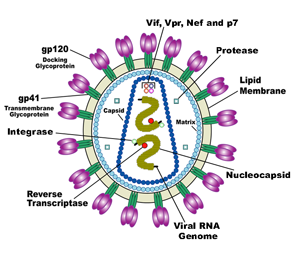 A study led by UMass Medical School professor and immunologist Katherine Luzuriaga, MD, and Johns Hopkins Children’s Center virologist Deborah Persaud, MD, highlights the long-term benefits of early antiretroviral therapy (ART) initiated in infants.
A study led by UMass Medical School professor and immunologist Katherine Luzuriaga, MD, and Johns Hopkins Children’s Center virologist Deborah Persaud, MD, highlights the long-term benefits of early antiretroviral therapy (ART) initiated in infants.
The study, presented on Monday, March 4, at the 20th annual Conference on Retroviruses and Opportunistic Infections (CROI) in Atlanta, shows that ART administered in early infancy can help curtail the formation of hard-to-treat viral sanctuaries—reservoirs of “sleeper” cells responsible for reigniting infection in most HIV patients within weeks of stopping therapy.
The report describes nine teenagers, five of whom started ART around two months of age. Ultrasensitive testing showed dramatically lower copy numbers of viral DNA in the five teens who received ART within two months of exposure compared to the four teens who started treatment at a later age. In addition, serial testing demonstrated a small decay in the amounts of HIV DNA in the blood of the early-treated children over time. Moreover, using very sensitive techniques, the researchers were not able to recover HIV from the early-treated teens. In contrast, clinical tests detected viral hideouts in the late-treated teens. Four of the five early-treated children showed no HIV-specific antibodies on standard testing, but antibodies were detected in the blood of all four who started treatment late.
In a related report, Dr. Luzuriaga and Dr. Persaud reported on Sunday, March 3, the case of an infant who underwent remission of HIV infection after receiving ART within 30 hours of birth. Taken together, these findings, the researchers say, can help pave the way toward achieving long-term viral suppression without treatment in children. Long-term viral suppression without treatment is an exceedingly rare phenomenon observed only in so-called “elite controllers,” HIV-infected patients whose immune systems are able to rein in viral replication and keep the virus at clinically undetectable levels even without treatment. HIV experts have long sought a way to help all HIV patients achieve such elite-controller status.
“Preventing mother-to-child transmission remains our primary goal but these studies provide the impetus for further studies aimed at curing children if they do acquire infection,” said Luzuriaga.
Luzuriaga, a professor of pediatrics and molecular medicine, has been investigating maternal-fetal transmission and pediatric HIV since the disease was first identified. Her laboratory focuses on the immunopathogenesis of persistent viral infections in humans, and the development of prophylactic and therapeutic vaccine strategies for HIV.
Her recent paper in the Journal of Virology (Identification of ongoing human immunodeficiency virus type 1 (HIV-1) replication in residual viremia during recombinant HIV-1 poxvirus immunizations in patients with clinically undetectable viral loads on durable suppressive highly active antiretroviral therapy. J Virol. 2009 Oct; 83(19):9731-42.), is an example of her laboratory’s work in understanding the persistence of HIV infection.
Her 2004 New England Journal of Medicine report (A trial of three antiretroviral regimens in HIV-1-infected children. N Engl J Med. 2004 Jun 10; 350(24):2471-80.) indicated that at an age of three months or younger, initiation of therapy and treatment with stavudine, lamivudine, nevirapine and nelfinavir were associated with improved long-term viral suppression.
The current research was funded by the National Institutes of Health and by the American Foundation for AIDS Research (amfAR)